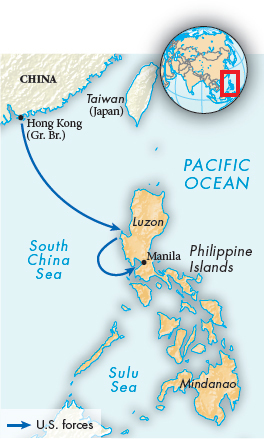Striving for Independence in Southeast Asia
The tide of nationalism was also rising in Southeast Asia. Nationalists in French Indochina, the Dutch East Indies, and the Philippines urgently wanted genuine political independence and freedom from foreign rule. In both French Indochina and the Dutch East Indies they ran up against an imperialist stone wall. The obstacle to Filipino independence came from America and Japan.
The French in Indochina, as in all their colonies, resisted all efforts to move toward self-
In the East Indies — modern Indonesia — the Dutch made some concessions after the First World War, establishing a people’s council with very limited lawmaking power. But in the 1930s the Dutch cracked down hard, jailing all the important nationalist leaders. Like the French, the Dutch were determined to hold on.
In the Philippines, however, a well-


Filipino nationalists were bitterly disillusioned when the United States, having taken the Philippines from Spain in the Spanish-
As in India and French Indochina, demands for independence grew. One important contributing factor was American racial attitudes. Americans treated Filipinos as inferiors and introduced segregationist practices borrowed from the American South. American racism made passionate nationalists of many Filipinos. However, it was the Great Depression that had the most radical impact on the Philippines.
As the United States collapsed economically in the 1930s, the Philippines suddenly appeared to be a liability rather than an asset. American farm groups lobbied for protection from cheap Filipino sugar. To protect American jobs, labor unions demanded an end to Filipino immigration. Responding to public pressure, in 1934 Congress made the Philippines a self-
>QUICK REVIEW
How did ideological conflicts shape the struggle to create a unified, genuinely independent nation in China?